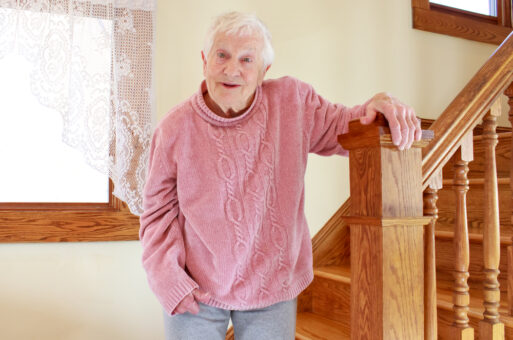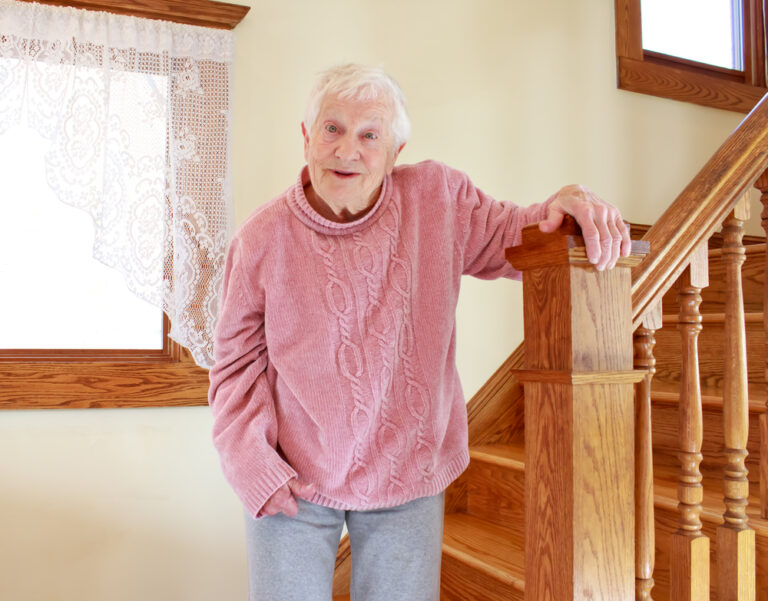
For most of us, walking up and down the stairs is easy. It’s a simple task we manage each and every day without even thinking about it. As we get older, however, we don’t necessarily have that luxury.
Ascending up or descending down the stairs can become quite a chore for older adults. Especially for those with mobility issues, a climb either up or down the stairs can actually be dangerous. If you live with a senior, it’s imperative you work on making your home’s staircase a hazard-free zone.
Remove any and all clutter from the stairs.
This tip should probably go without saying. However, there are many Canadians who consider their stairwells storage spaces for items such as bags, clothes and toys. Arguably, rule number one in the world of safe stair climbing is to keep the stairwell completely free of any and all clutter. We can’t think of an easier way to avoid tripping hazards when climbing up and down the steps. This is true for people of all ages – seniors and children especially.
“Keep all shoes, toys, magazines or any other stuff off the stairs at all times to avoid accidents,” insists AtHomeMum.com, “But even if you have tidied up, toys can end up anywhere especially if your children love to throw something on the steps. Once you see an object on the stairs, be quick to pick it up, because accidentally stepping on it can send you or your children sprawling down the staircase.”
Set up a gate.
Sometimes, a climb either up or down the steps isn’t even necessary for an accident to happen. Do you live with a senior who struggles with balance? If so, he/she is susceptible to falling down the stairs simply by being too close to the top of the staircase. A safety gate placed at the top of the stairs can help to avoid the unnecessarily dangerous prospect of a fall down the stairs.
“Avoid gates that have gaps or notches that could be used for climbing,” advises InlineDesign.com, “Hardware-mounted gates have proven to be the most secure, so use them when at all possible, and if for nothing else, at the top of the stairwell. Pressure-mounted gates are not stable enough to prevent falls from the top of the stairs.”
Free your hands.
Ideally, you shouldn’t be carrying anything when walking up and down the stairs. Naturally, this isn’t always possible. At any given time, there’s bound to be something you need to transport from one level of the home to the other. However, you should always have a hand free to hold on to the railing. We would recommend that seniors, however, always have their hands free when either ascending up or descending down the stairs.
“When using the stairs, it’s important to pay attention and proceed with caution,” warns InlineDesign.com, “Use at least one handrail at all times, and avoid carrying anything which requires two hands or blocks your line of vision. As tempting as it is, don’t text, email, type, or search on mobile phones or other devices while using the stairs. If your eyes aren’t on the stairs, then neither is your attention!”
Install a stair lift.
Stair lifts are motorized chairs that slowly and safely glide up and down sets of stairs. To learn more about the stair lifts offered by LifeCare Mobility Solutions or to book an in-home, no-obligation consultation, call 416-267-9800 or email us at info@lifecaremobility.ca. You may also contact us by filling out the form on our Contact page!










